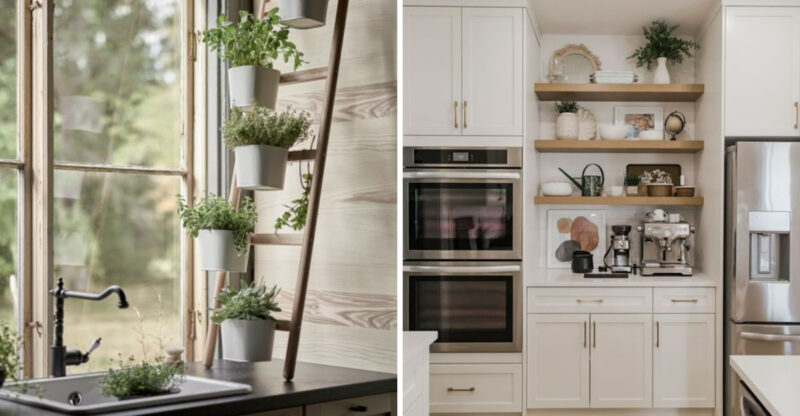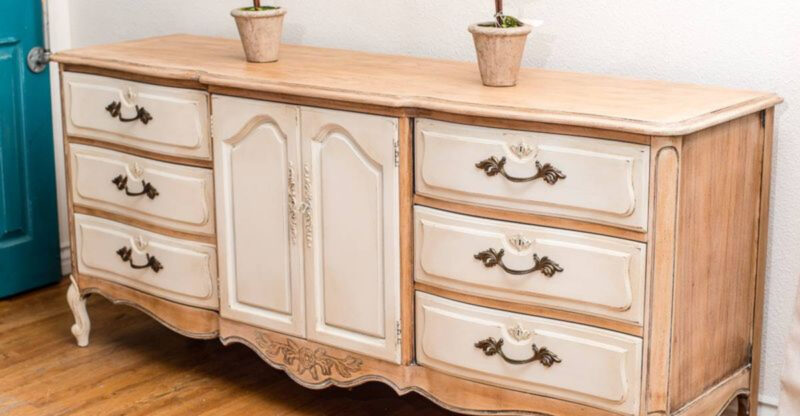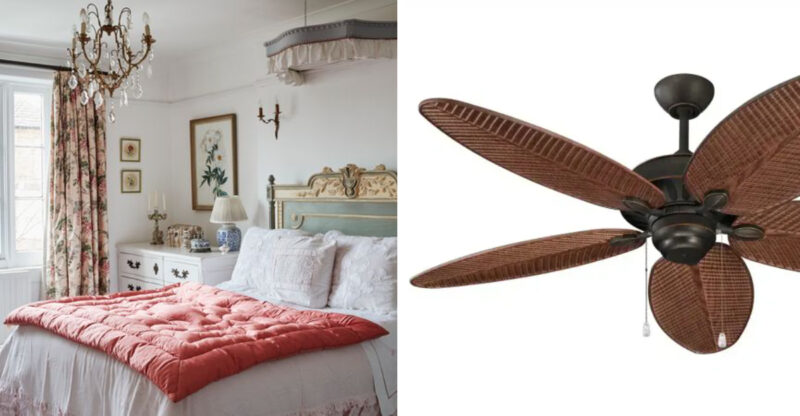The 13 Paint Tricks Designers Swear By For A More Luxurious Kitchen
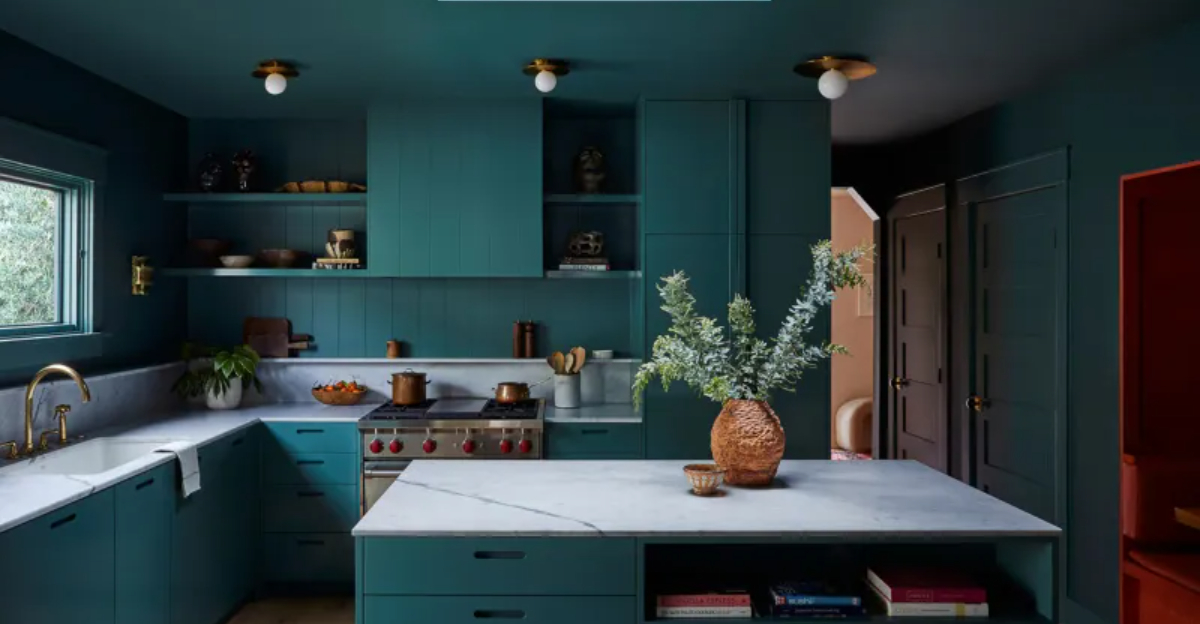
Transforming your kitchen into a luxurious space doesn’t always require a complete renovation.
Sometimes, a fresh coat of paint applied with designer techniques can make all the difference. Professional designers know that paint is the most affordable way to dramatically change your kitchen’s appearance and create that high-end look you’re craving.
Here are thirteen paint tricks that can elevate your kitchen from ordinary to extraordinary without breaking the bank.
1. Glossy Finish
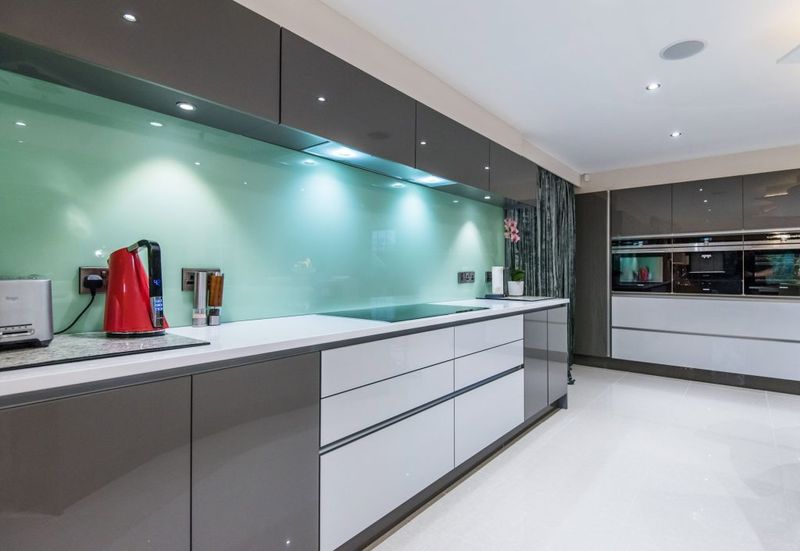
Applying a glossy finish to your kitchen cabinets creates an instant upscale vibe. Light bounces off these surfaces, making your space appear larger and more polished. Many homeowners overlook this simple upgrade!
The reflective quality of high-gloss paint mimics the look of expensive lacquered cabinetry found in designer kitchens. For best results, ensure surfaces are properly prepped and sanded smooth before application.
I recommend using an oil-based paint for the most durable and mirror-like finish. Though it requires more drying time than water-based alternatives, the dramatic transformation is worth the wait. Your kitchen will look like it belongs in a luxury home magazine.
2. Two-Tone Cabinets

Playing with two different colors on your kitchen cabinets instantly adds designer flair. Many luxury kitchens feature darker lower cabinets with lighter uppers to create visual interest without overwhelming the space.
When I renovated my own kitchen, I painted the island navy blue while keeping perimeter cabinets crisp white. The contrast made the room feel custom and intentional. This approach works wonderfully in both large and small kitchens.
Choose colors that complement each other rather than compete. Grays paired with whites create a sophisticated palette, while blues and creams offer timeless appeal. This technique tricks the eye into seeing a more expensive, thoughtfully designed kitchen.
3. Metallic Accents
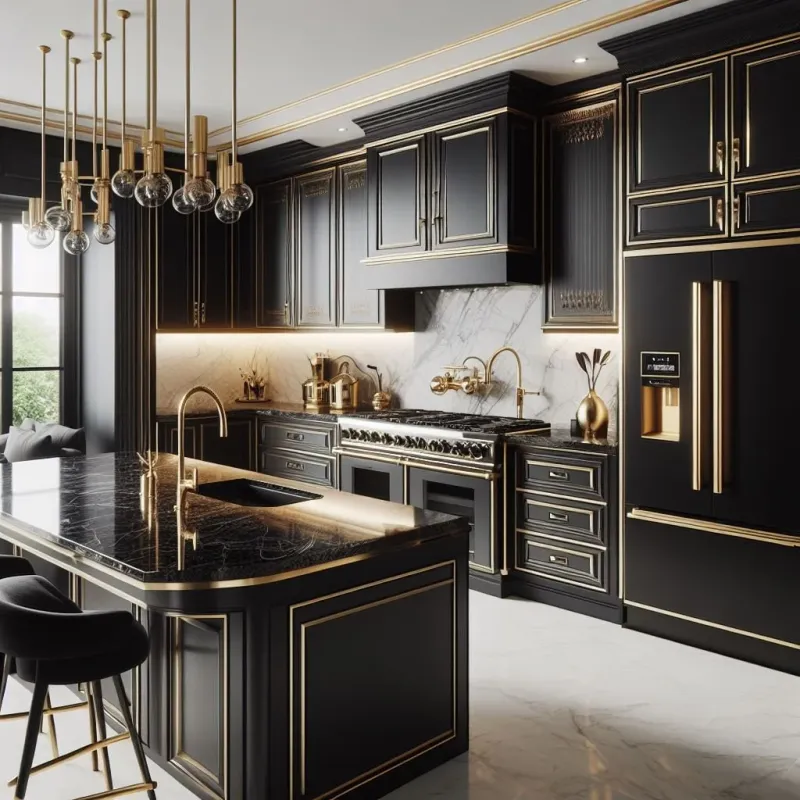
Metallic paint touches can transform ordinary kitchen elements into extraordinary focal points. Imagine cabinet edges rimmed in soft gold or copper, bringing unexpected glamour to your cooking space.
You don’t need to go overboard subtle is better with this luxe technique. I’ve seen stunning results when homeowners apply metallic paint to just the inside edges of open shelving or as a thin border around cabinet panels.
The trick lies in proper application: use high-quality painter’s tape for crisp lines and apply multiple thin coats rather than one thick layer. These metallic highlights catch the light beautifully throughout the day, creating that expensive custom look that guests will notice immediately.
4. Contrasting Trim
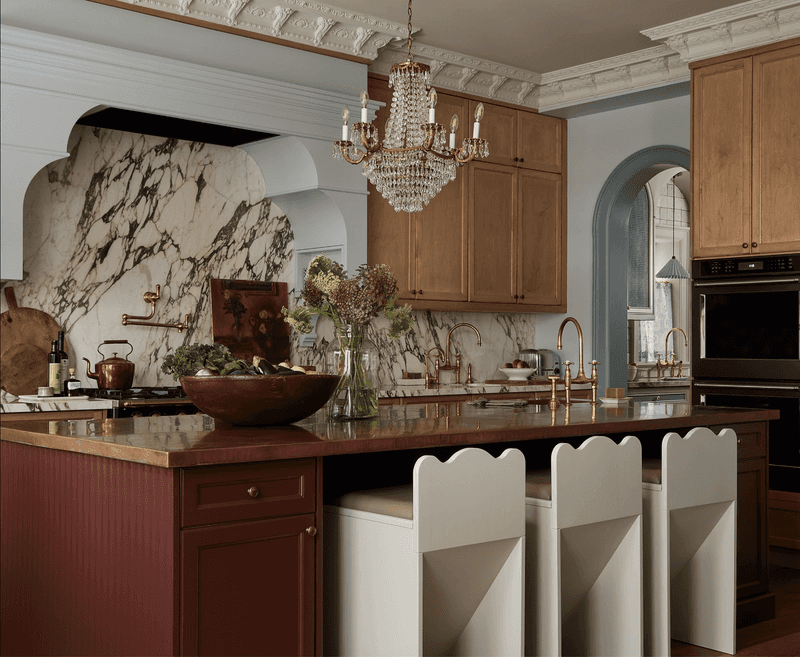
Painting trim in a contrasting color instantly elevates your kitchen’s design profile. This technique draws attention to architectural details that might otherwise go unnoticed in standard all-white kitchens.
If your cabinets are white, try painting crown molding or trim pieces in a soft black or charcoal. The dramatic outline effect frames your cabinetry like expensive custom millwork. When I implemented this in a client’s home, visitors assumed she’d completely replaced her cabinets!
The best part? This project requires minimal paint and can be completed in a weekend. Focus on clean, precise lines where colors meet for that professional finish. This designer trick works especially well in traditional or transitional kitchens where molding details already exist.
5. Matte Walls

Matte finish paint on kitchen walls creates a velvety backdrop that whispers sophistication. Unlike semi-gloss traditionally used in kitchens, matte finishes absorb light rather than reflect it, creating depth that feels intentionally upscale.
Did you know that designers often use matte paint to hide wall imperfections? The non-reflective surface disguises minor drywall flaws that glossier finishes would highlight. I recently painted my kitchen walls in a matte clay color, and the rich, soft texture completely transformed the space.
Modern paint technology has made matte finishes more practical for kitchens look for washable matte formulas specifically designed for high-traffic areas. The subtle, sophisticated look pairs beautifully with both contemporary and traditional cabinet styles.
6. Ombre Effect
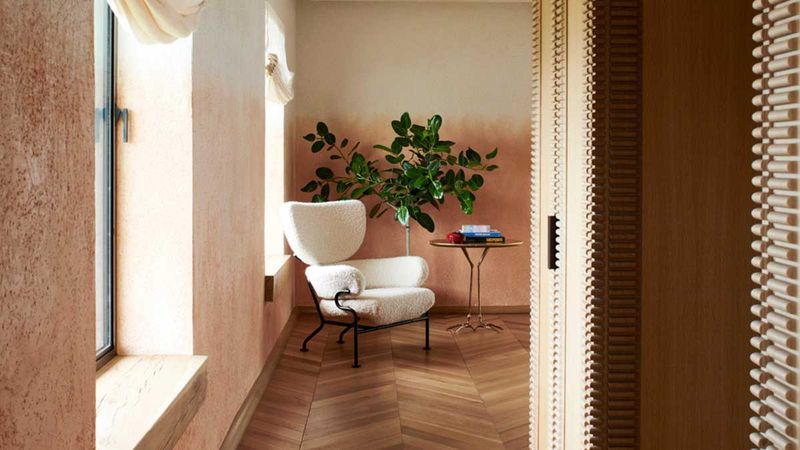
Creating an ombre effect with paint brings artistic flair to kitchen walls or cabinets. This gradient technique transitions from light to dark (or between complementary colors), adding dimension that flat paint simply cannot achieve.
When my friend wanted something unique for her kitchen island, we painted it with a subtle blue-to-navy ombre that made the piece look like a custom designer item. The key is working quickly while paint is wet, using a dry brush to blend the transition areas seamlessly.
For walls, horizontal ombres can make ceilings appear higher, while vertical gradients create the illusion of greater depth. This technique works best with colors in the same family rather than dramatically different hues. The result feels both artistic and luxurious.
7. Bold Island Color
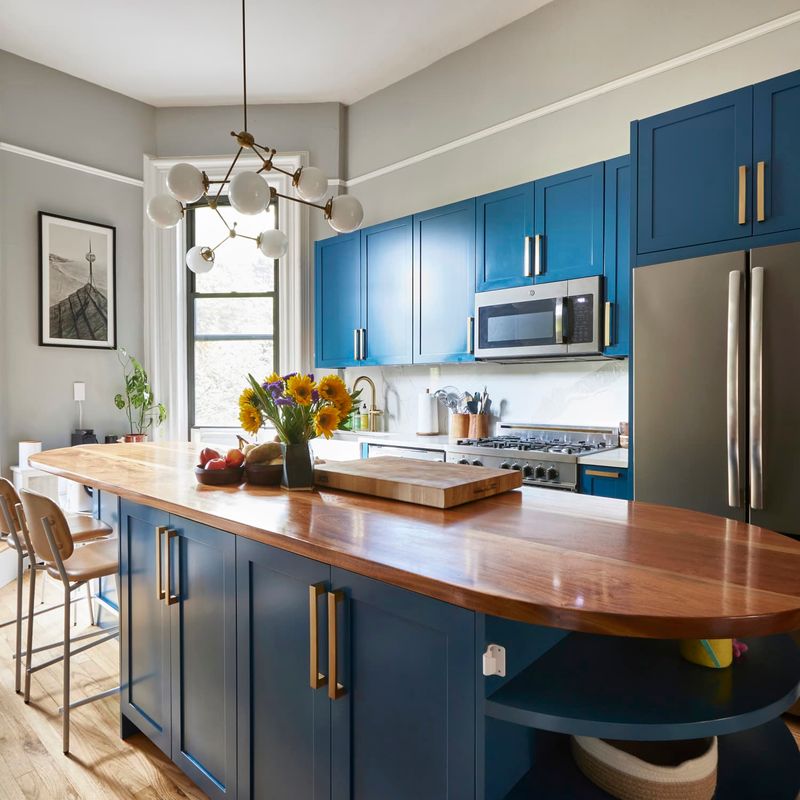
Making your kitchen island a different color than surrounding cabinets instantly creates a high-end, custom look. Think of your island as a statement furniture piece rather than just another cabinet.
Deep emerald green, rich navy, or even muted plum can transform an ordinary island into the room’s focal point. I painted my client’s island in Benjamin Moore’s Hale Navy, keeping perimeter cabinets white visitors immediately assumed it was a complete kitchen renovation rather than just paint!
The contrast draws the eye and anchors the space like expensive designer kitchens. For maximum impact, choose a color that complements your overall color scheme but stands confidently on its own. This single paint change delivers serious design impact without requiring major construction.
8. Soft Neutrals
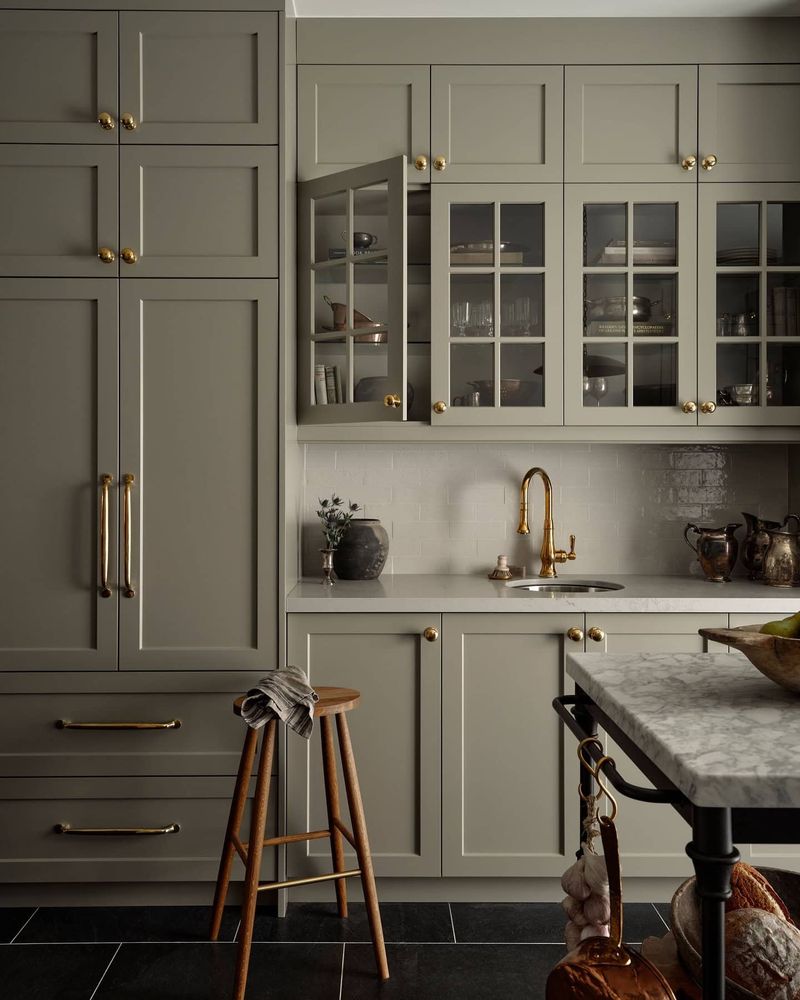
Luxury kitchens often feature sophisticated neutral paint colors rather than stark whites. These complex neutrals – think greige, taupe, or soft mushroom contain subtle undertones that shift with changing light throughout the day.
Choosing the right neutral requires considering your kitchen’s natural light source. North-facing kitchens benefit from warmer neutrals with yellow undertones, while south-facing spaces can handle cooler neutrals with gray or blue undertones. My favorite trick is painting sample boards and moving them around the kitchen at different times of day.
The magic happens when these nuanced neutrals interact with your countertops and backsplash materials. They create a sophisticated backdrop that feels intentionally designed rather than builder-basic. High-end designers rarely use pure white they understand the power of these complex neutrals.
9. Textured Paint
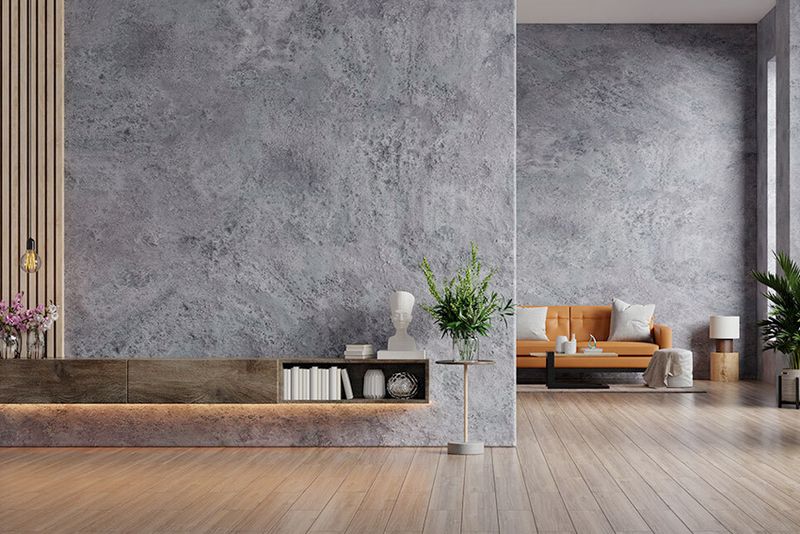
Adding subtle texture to painted surfaces creates visual depth that flat paint simply cannot achieve. Lime wash, roman clay, or specialty textured paints bring old-world luxury to modern kitchens.
How does it work? These specialty paints contain minerals or additives that create dimension when applied with specific techniques. I recently used a lime wash on a kitchen accent wall, and guests constantly run their hands over it, amazed by its velvet-like finish.
The application process requires patience typically involving multiple layers applied with special brushes or trowels. Focus on one feature wall rather than the entire kitchen for maximum impact without overwhelming the space. This technique transforms ordinary walls into conversation pieces that exude handcrafted luxury.
10. High-Contrast Baseboards
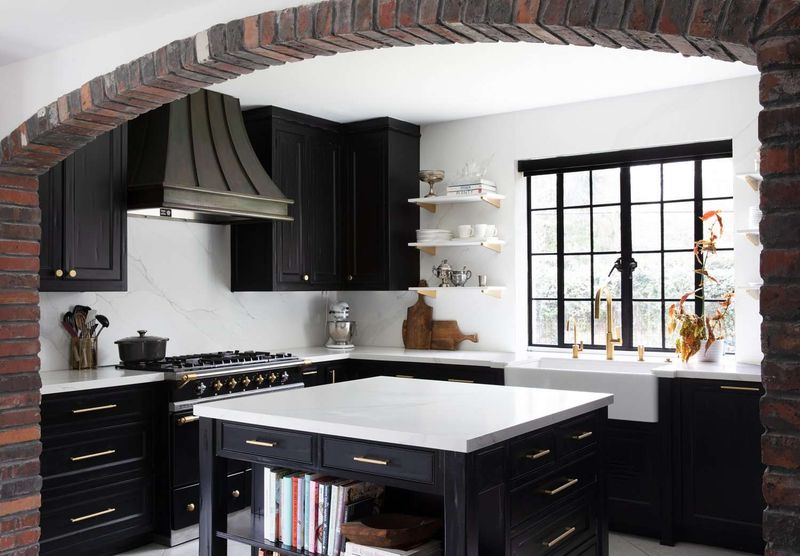
Painting baseboards in unexpected dark colors creates architectural interest that makes kitchens look instantly more expensive. While white baseboards are standard, black or charcoal ones draw the eye and define the space in a sophisticated way.
This trick works particularly well with light or medium-toned walls. The contrast creates a grounding effect that designers use to make spaces feel intentionally curated rather than builder-basic. When I painted my kitchen baseboards deep navy to match my island, the cohesion made the entire room feel more thoughtfully designed.
It’s a small detail with big impact most guests notice something different but can’t immediately identify what makes the space feel special. For best results, use semi-gloss or satin finish paint on baseboards for durability and subtle sheen.
11. Color Blocking
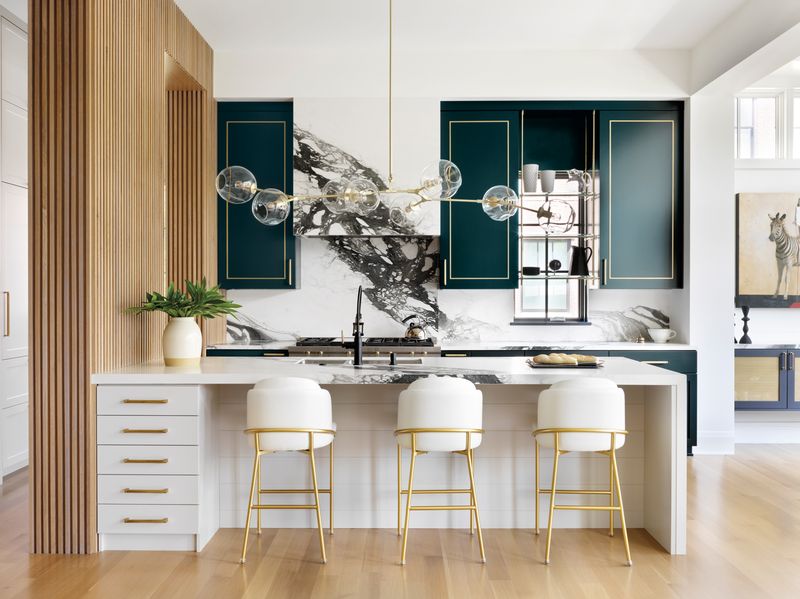
Color blocking transforms ordinary kitchen walls into architectural features without construction. This technique involves painting geometric sections in contrasting colors to create visual interest and dimension.
For a recent project, I painted a rectangular block of deep green behind open shelving while keeping surrounding walls light. The effect framed the shelves like expensive built-ins! You can also create horizontal color blocks to visually widen a narrow kitchen.
The secret to professional-looking results is precise edges use high-quality painter’s tape and a level to mark your sections. Choose colors that complement your cabinetry and countertops. This designer technique delivers maximum impact with minimal investment, instantly making your kitchen look more intentional and high-end.
12. Layered Sheen
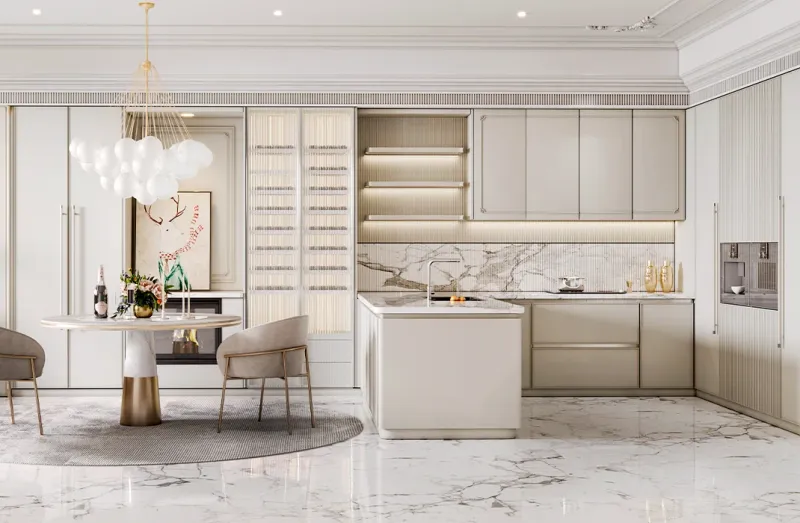
Playing with different paint sheens in the same color creates subtle dimension that catches light beautifully. Imagine cabinet doors in satin finish with high-gloss trim in the identical color the contrast is noticeable yet sophisticated.
This technique works because our eyes perceive different sheens as slightly different colors, even when they’re identical. I recently applied this trick in a white kitchen, using flat paint on walls, satin on cabinet faces, and semi-gloss on cabinet frames. The layered effect created depth without introducing competing colors.
Where should you use this trick? Cabinet details, moldings, and architectural features benefit most from sheen variation. The subtle contrast draws attention to craftsmanship and design details that might otherwise go unnoticed, giving your kitchen that custom, high-end look.
13. Deep Saturation
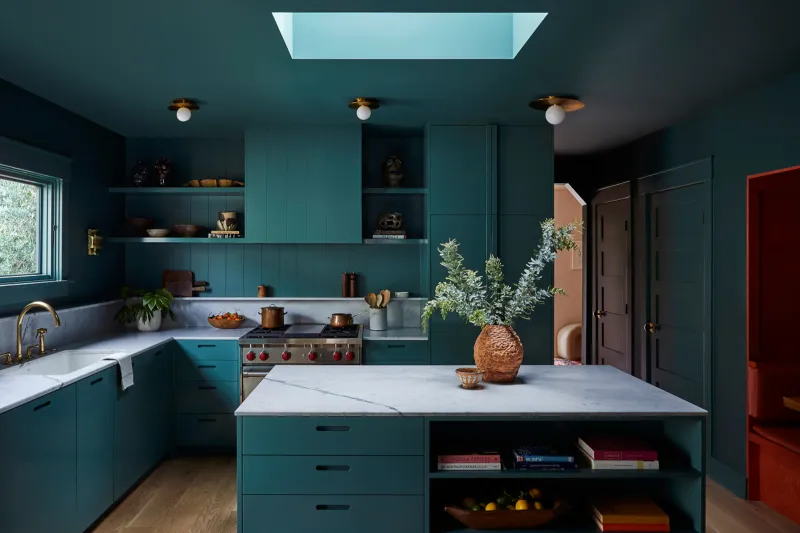
Deeply saturated paint colors create drama and luxury that lighter shades simply cannot match. Think rich emerald green, inky navy, or chocolate brown these bold choices signal confidence and intentional design.
Though many homeowners fear dark colors will make spaces feel smaller, the opposite often occurs when done correctly. My client’s small galley kitchen actually felt more expansive after we painted cabinets in a saturated blue-green the color created depth that visually pushed the walls outward.
The key to success is proper lighting and balance. Pair deep cabinet colors with light countertops and plenty of task lighting. Quality paint makes all the difference here invest in premium brands with high pigment concentration for that rich, velvety finish that screams luxury.

